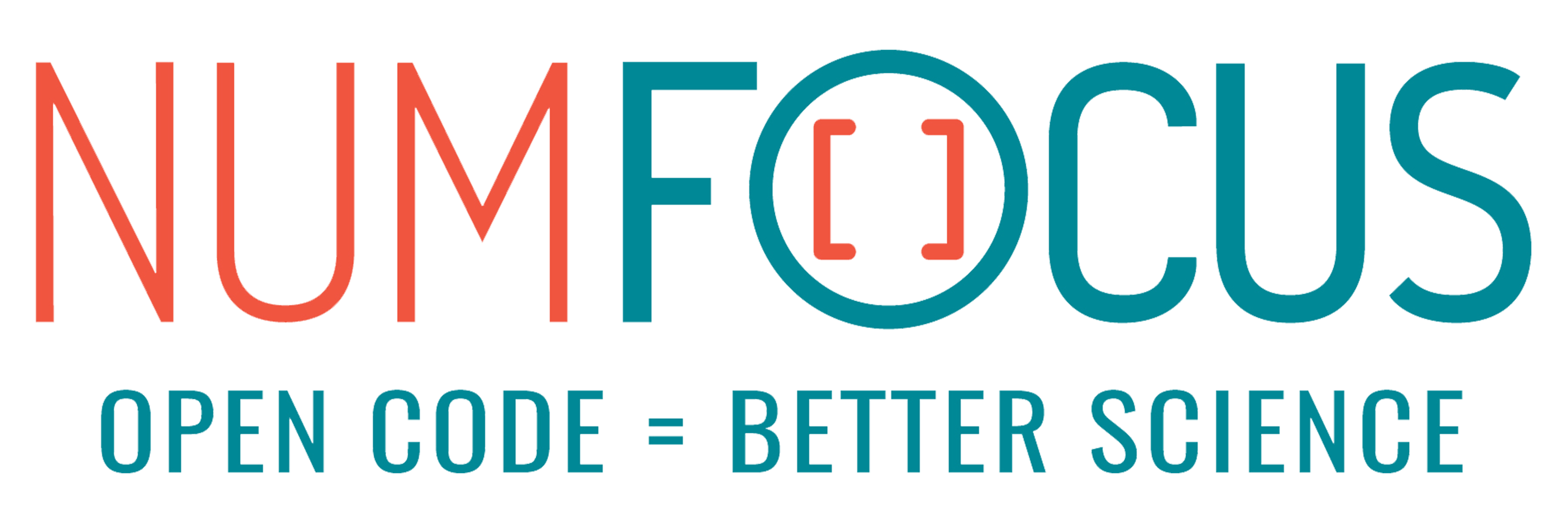Python tools for geographic data
GeoPandas is a project to add support for geographic data to
pandas objects. It currently implements
GeoSeries and GeoDataFrame types which are subclasses of
pandas.Series and pandas.DataFrame respectively. GeoPandas
objects can act on shapely
geometry objects and perform geometric operations.
GeoPandas geometry operations are cartesian. The coordinate reference
system (crs) can be stored as an attribute on an object, and is
automatically set when loading from a file. Objects may be
transformed to new coordinate systems with the to_crs() method.
There is currently no enforcement of like coordinates for operations,
but that may change in the future.
Documentation is available at geopandas.org (current release) and Read the Docs (release and development versions).
The GeoPandas project uses an open governance model and is fiscally sponsored by NumFOCUS. Consider making a tax-deductible donation to help the project pay for developer time, professional services, travel, workshops, and a variety of other needs.
See the installation docs for all details. GeoPandas depends on the following packages:
pandasshapelypyogriopyprojpackaging
Further, matplotlib is an optional dependency, required for plotting.
Those packages depend on several low-level libraries for geospatial analysis, which can be a challenge to install. Therefore, we recommend to install GeoPandas using the conda package manager. See the installation docs for more details.
- Ask usage questions ("How do I?") on StackOverflow or GIS StackExchange.
- Get involved in discussions on GitHub
- Report bugs, suggest features or view the source code on GitHub.
- For a quick question about a bug report or feature request, or Pull Request, head over to the gitter channel.
- For less well defined questions or ideas, or to announce other projects of interest to GeoPandas users, ... use the mailing list.
>>> import geopandas
>>> from shapely.geometry import Polygon
>>> p1 = Polygon([(0, 0), (1, 0), (1, 1)])
>>> p2 = Polygon([(0, 0), (1, 0), (1, 1), (0, 1)])
>>> p3 = Polygon([(2, 0), (3, 0), (3, 1), (2, 1)])
>>> g = geopandas.GeoSeries([p1, p2, p3])
>>> g
0 POLYGON ((0 0, 1 0, 1 1, 0 0))
1 POLYGON ((0 0, 1 0, 1 1, 0 1, 0 0))
2 POLYGON ((2 0, 3 0, 3 1, 2 1, 2 0))
dtype: geometry
Some geographic operations return normal pandas objects. The area property of a GeoSeries will return a pandas.Series containing the area of each item in the GeoSeries:
>>> print(g.area)
0 0.5
1 1.0
2 1.0
dtype: float64
Other operations return GeoPandas objects:
>>> g.buffer(0.5)
0 POLYGON ((-0.3535533905932737 0.35355339059327...
1 POLYGON ((-0.5 0, -0.5 1, -0.4975923633360985 ...
2 POLYGON ((1.5 0, 1.5 1, 1.502407636663901 1.04...
dtype: geometry
GeoPandas objects also know how to plot themselves. GeoPandas uses
matplotlib for plotting. To generate a plot of a
GeoSeries, use:
>>> g.plot()
GeoPandas also implements alternate constructors that can read any data format recognized by pyogrio. To read a zip file containing an ESRI shapefile with the boroughs boundaries of New York City (the example can be fetched using the geodatasets package):
>>> import geodatasets
>>> nybb_path = geodatasets.get_path('nybb')
>>> boros = geopandas.read_file(nybb_path)
>>> boros.set_index('BoroCode', inplace=True)
>>> boros.sort_index(inplace=True)
>>> boros
BoroName Shape_Leng Shape_Area \
BoroCode
1 Manhattan 359299.096471 6.364715e+08
2 Bronx 464392.991824 1.186925e+09
3 Brooklyn 741080.523166 1.937479e+09
4 Queens 896344.047763 3.045213e+09
5 Staten Island 330470.010332 1.623820e+09
geometry
BoroCode
1 MULTIPOLYGON (((981219.0557861328 188655.31579...
2 MULTIPOLYGON (((1012821.805786133 229228.26458...
3 MULTIPOLYGON (((1021176.479003906 151374.79699...
4 MULTIPOLYGON (((1029606.076599121 156073.81420...
5 MULTIPOLYGON (((970217.0223999023 145643.33221...
>>> boros['geometry'].convex_hull
BoroCode
1 POLYGON ((977855.4451904297 188082.3223876953,...
2 POLYGON ((1017949.977600098 225426.8845825195,...
3 POLYGON ((988872.8212280273 146772.0317993164,...
4 POLYGON ((1000721.531799316 136681.776184082, ...
5 POLYGON ((915517.6877458114 120121.8812543372,...
dtype: geometry







